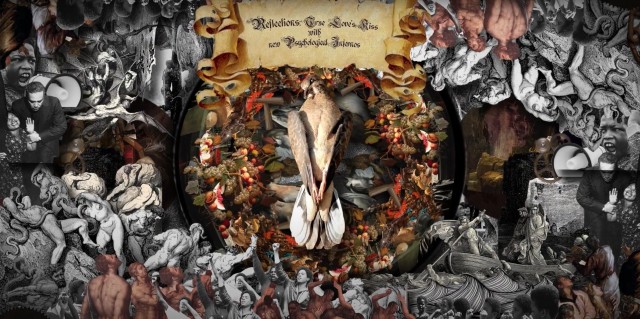As a white, heterosexual male I’m never going to be able to understand what it is like growing up Black or Queer. The only way for me to even attempt to comprehend that experience is through the stories of others. Justice Jamal Jones’ 13-minute short How To Raise A Black Boy is an ambitious effort to expand the circle of empathy to folks like me, via a strange, but mesmerising experimental narrative that fits a fairytale format onto a collage of identity, American politics, and what the director describes as “the shared experience of childhood secrets that haunt our adulthood”.
Inspired by the classic tale of Peter Pan and labeled by its creator as “a ‘once upon a time’ story told from the past to the future”, How To Raise A Black Boy introduces us to its world as we witness four young boys lined up in front of (what the narrator explains is) a little cottage in Kingston Gardens. As the story progresses, the voiceover providing context for what we see on screen, Jones’ short takes on many forms, playing with elements of horror and fashion filmmaking, the influence of the fairy-tale consistent throughout.
“In this fairy-tale we can all coexist in our mutual experiences as black boys”
Originally created as an examination of the director’s childhood, How To Raise A Black Boy developed into what they explain is “the story of my artistic and academic growth”. Hoping that their simple fairytale can be “shared among black boys and children alike”, Jones explains how they “see myself, my brothers, my fathers, and my lovers” in the short, before concluding that “in this fairy-tale we can all coexist in our mutual experiences as black boys”.

A screenshot of one of the collage transitions, which Jones reveals they used to “propel the narrative forward”.
Presented almost in a chapter-like fashion, How To Raise A Black Boy is interspersed with three whimsical collage transitions that the director employs to propel his narrative forward. Revealing, as we discuss the short’s production, that they represent a range of themes—the transition from puberty, the loss of a home, the breaking of “the curse of boyhood”—it’s clear from listening to Jones talk about their film that they’ve given every element of production and story thorough consideration. As is evident in the filmmaker’s eloquent statement below:
“Most written histories, with which we are familiar are Western, They are ordered by event; they are structured to present events sequentially, and this helps to establish consequential actions[&] causes and effects. By using imagery and art as a form of historical documentation, history can be reimagined outside of a Eurocentric viewpoint.”
“Visuals also allow stories and histories to stand alone without having to be colonized by language to be understood in relation to Western society. History through a decolonized and more visual viewpoint is layered, unlike a timeline, but rather like a collage, that can be cut and pasted to suit the viewer at hand. By using collage within my film, the piece was able to live completely outside of whiteness and time, allowing the piece to fully develop without barriers.
Academic philosophy does not often translate well to visual storytelling, and while Jones’s collage approach presents difficulties for a viewer, we couldn’t help but be overwhelmed by the remarkable visuals of the film and moments of exquisite tenderness and grace. We admire the formal daring of How to Raise a Black Boy, so while one might feel frustrated with the deconstruction of linear cause and effect employed, it is hard to deny that the surreality that Jones evokes allows the film access to a deeper emotional register. A recent selectee to the Sundance Ignite Fellowship, and now in preproduction on a new short titled Crossroads Blues, which explores “the contagious and generational nature of mental health”, Jones is hoping to turn this next story into a feature.
After How To Raise A Black Boy, I’m down to check out whatever this filmmaker does next.

 Rob Munday
Rob Munday